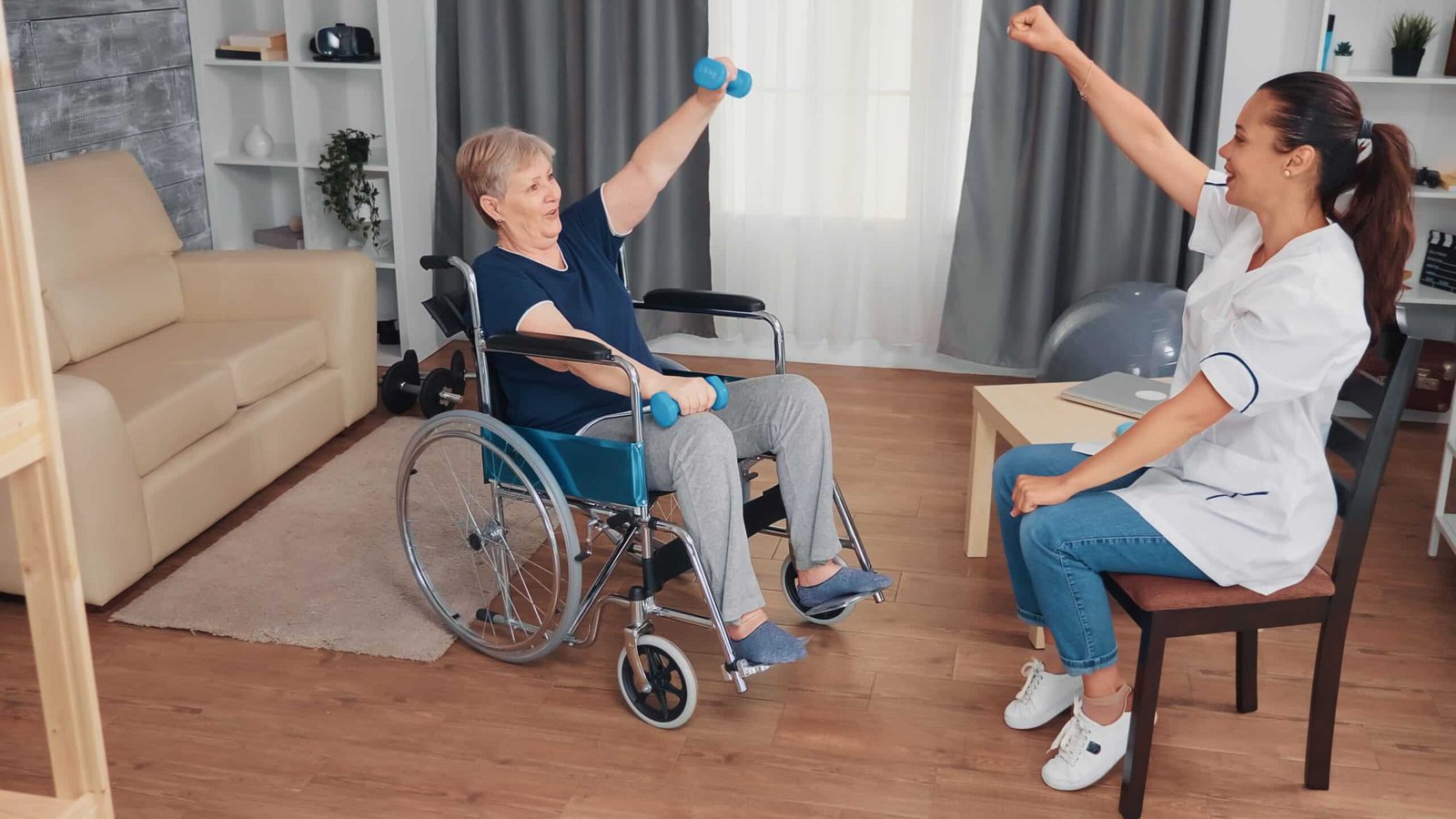Stroke Rehabilitation Case: Philip came to see us two years after he had a stroke. He had lost all mobility on his right side and lost the use of his speech. Philip needed to use an electric wheelchair to get around the house and a pushchair for going out. Prior to joining our intensive stroke program his wife and sole carer had just passed away. The options his family faced were to move him to a nursing home or try and improve his independence enough to keep him at home safely.
Sadly stroke rehabilitation across Australia is very inconsistent and access to sufficient rehabilitation services can differ widely depending on where you are when you have your stroke and what resources are available in the hospital at the time. Rehabilitation can be delayed for weeks due to bed blocks, and acute care services often cannot provide interim rehabilitation while you are waiting. If you are older than 85 years old then you may be discharged directly to a nursing home. If you do make it to a rehabilitation facility, recent studies show that on average people receive less than 60 minutes of rehabilitation a day.
Following his stroke, Philip was not accepted for rehabilitation and was sent home needing assistance for all of his daily care needs. He, like many other Australians was hit by the rehabilitation crisis that is growing larger and larger. He was overlooked completely.
The evidence for stroke rehabilitation is clear, the guidelines are clear and the passion and dedication of professionals working at the coalface is clear, and yet, nothing changes. The public health system is unwieldy and broken and people like Phillip are losing out.
One solution is to look more closely at delivery of stroke care services in the community. Comparatively inexpensive, and in some instances, better placed to facilitate early discharge from costly inpatient rehabilitation services, community stroke rehabilitation programs provide an alternative for patients with mild to moderate strokes. People who are discharged to live at home generally need to do more for themselves and can be in ‘training’ the better part of twelve hours going about their daily activities. Rates of dependency, quality of life, readmission and overall service satisfaction have all shown reported improvements in an early supported discharge program.
Stroke care costs over $2 billion dollars each year. With an aging population and higher rates of cardiovascular disease the costs of managing strokes will only increase. Stroke rehabilitation in Australia needs a radical overhaul and calls for more innovative thinking. Greater use of an integrated community service model may be the next step to maximise efficiency and outcomes. For people like Phillip, this was the only option left to him and it changed his life.
After completing our private ‘intensive stroke program’ delivered in the community, Philip’s confidence improved, the wheelchairs are now gathering dust in the shed, he is mowing the lawn on a ride-on, using an exercise bike and is now able to live independently in his home with very limited assistance. “After 2 years of no major changes, it only took four weeks at the rehab centre to turn everything around completely”.
The right kind of intensive stroke program, tailored to the individual, their history, their medication and their goals by a neurological physiotherapist will help even more. Use it and improve it!


Comments are closed.